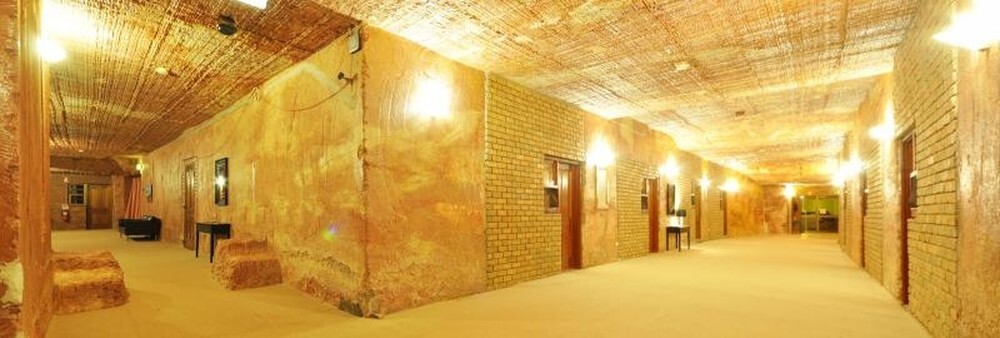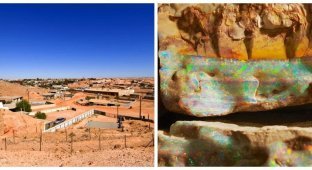Coober Pedy: Australian city living underground (12 photos)
The city of Coober Pedy with a population of 1695 could be a typical town... be it on the surface. The locals have moved land to escape the heat, which in the area can reach 50 degrees Celcius. Building a house here costs about the same as and ordinary, but here in the process of construction you can find opals, which will more than cover all costs. 
The city's name comes from an aboriginal term "Kupa piti", which translates as "white man's hole". standing on surface, never guess what's right under your feet is a booming mining town. The only one a sign that people live here - ventilation ducts sticking out of the ground pipes. These pipes allow oxygen to enter the caves and allow carbon dioxide. 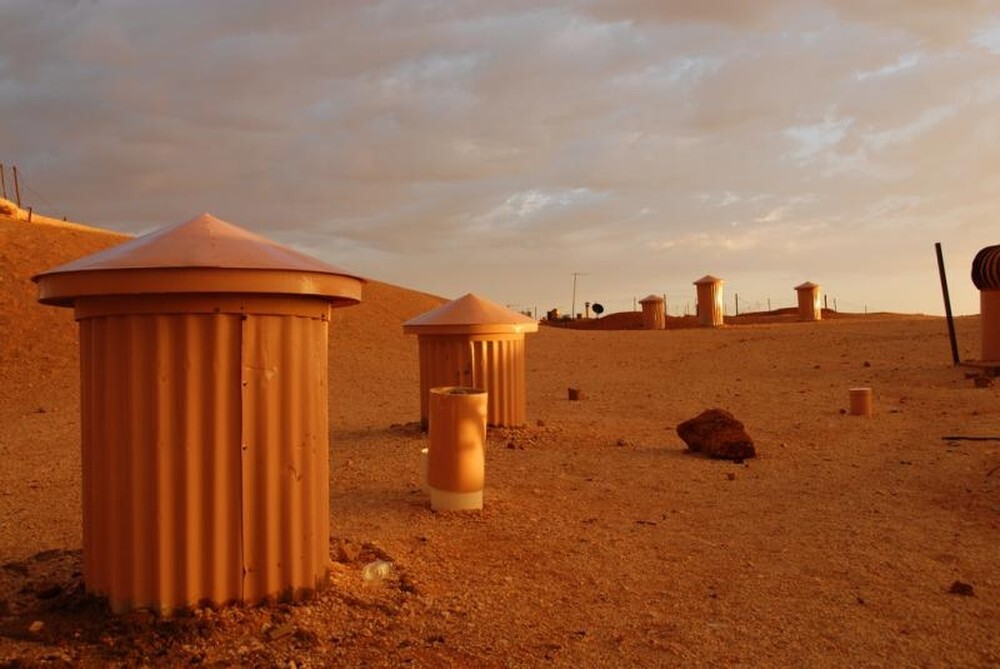
In addition to ventilation pipes, the only thing that is located above ground is the entrance to every dugout house, right on the slope limestone hills. The houses are located at a depth of 2.5 to 7 meters under the surface of the earth. 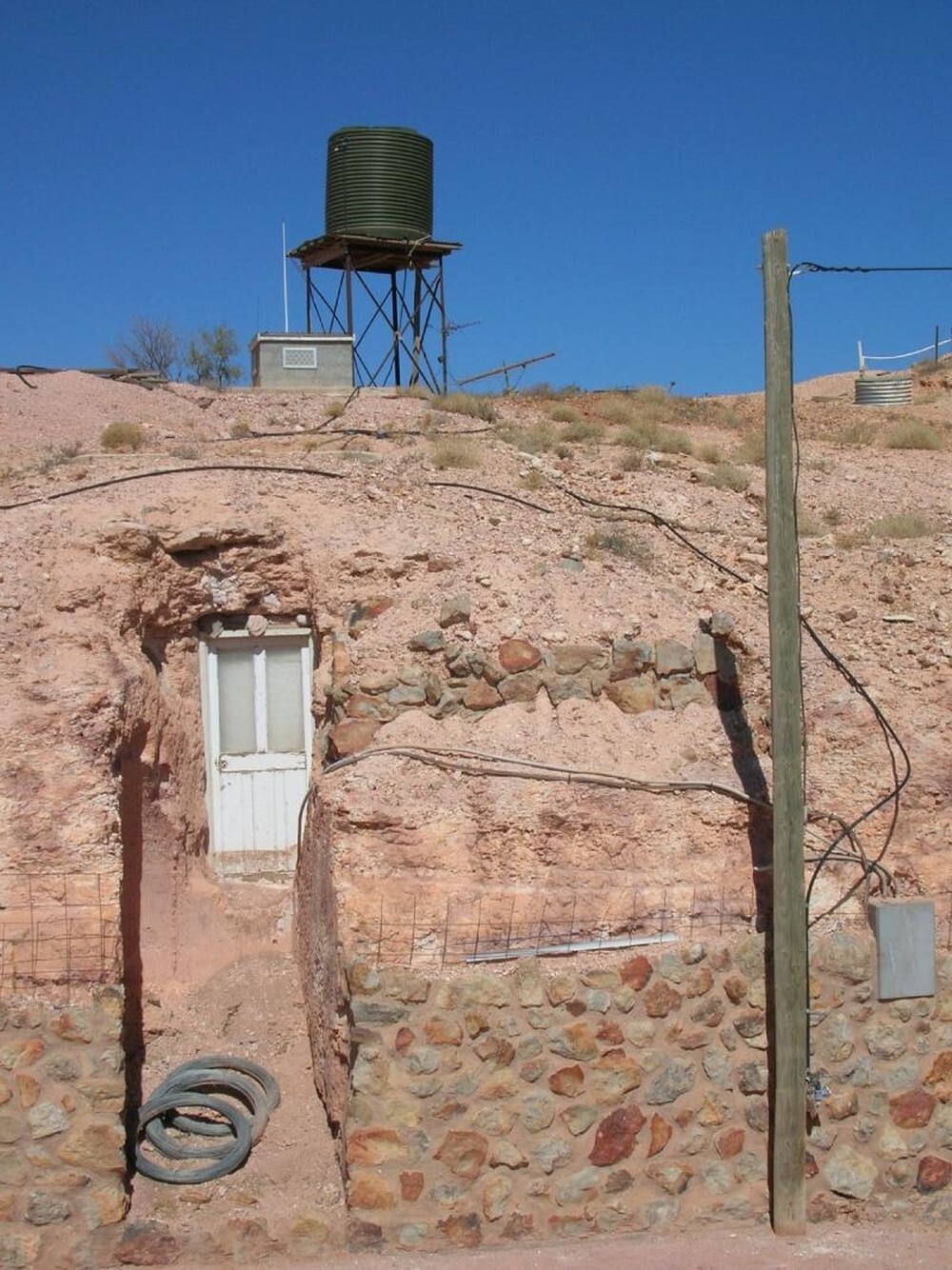
Coober Pedy residents describe their lifestyle as "a mixture of Flintstones with the Jetsons," because this is primitive housing with modern conveniences. 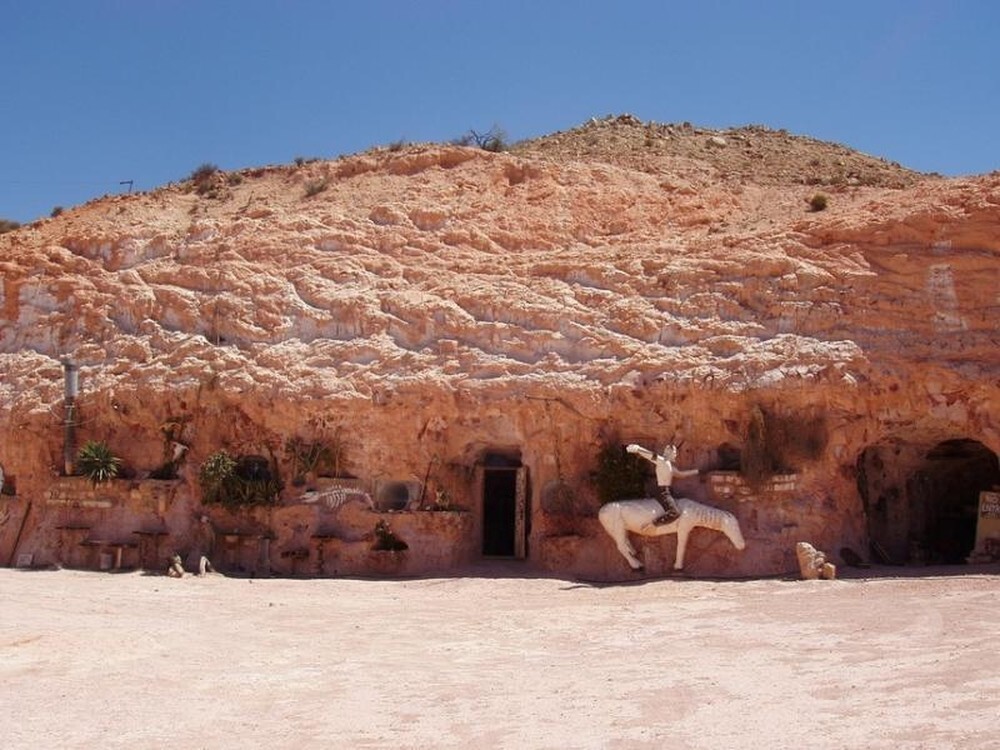
The kitchen is always located closest to the entrance to the dugout, and it is the only room in the house that has windows, if any. There is. 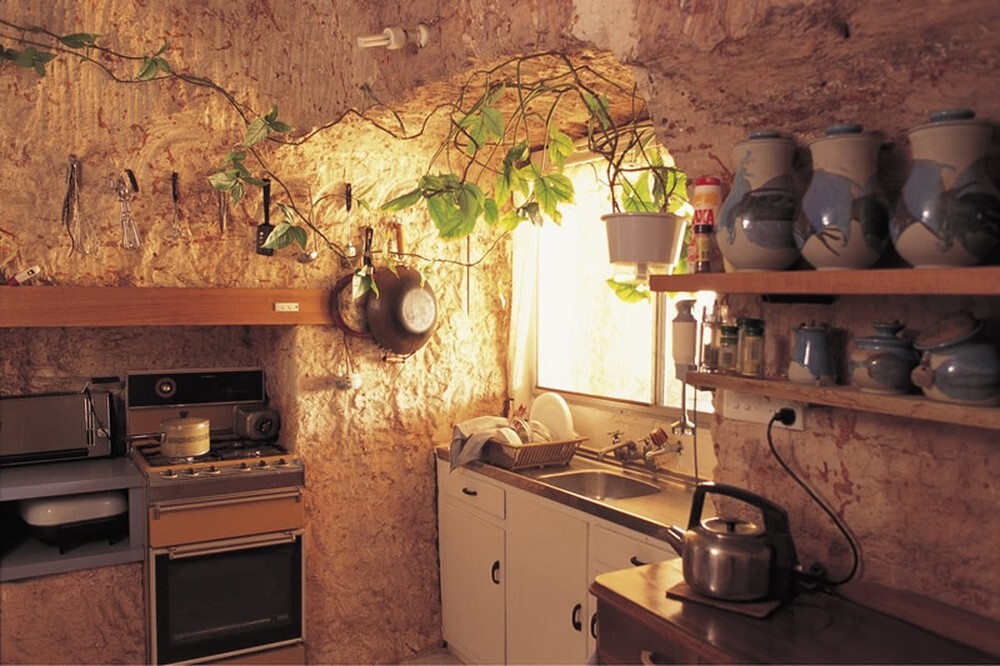
On the sandstone hills with an area of 2800 hectares is located about 1500 dugouts. A typical average house consists of 3-4 bedrooms, living room, bathroom and kitchen. If you need more space, you can simply dig another bedroom deeper into the hills. 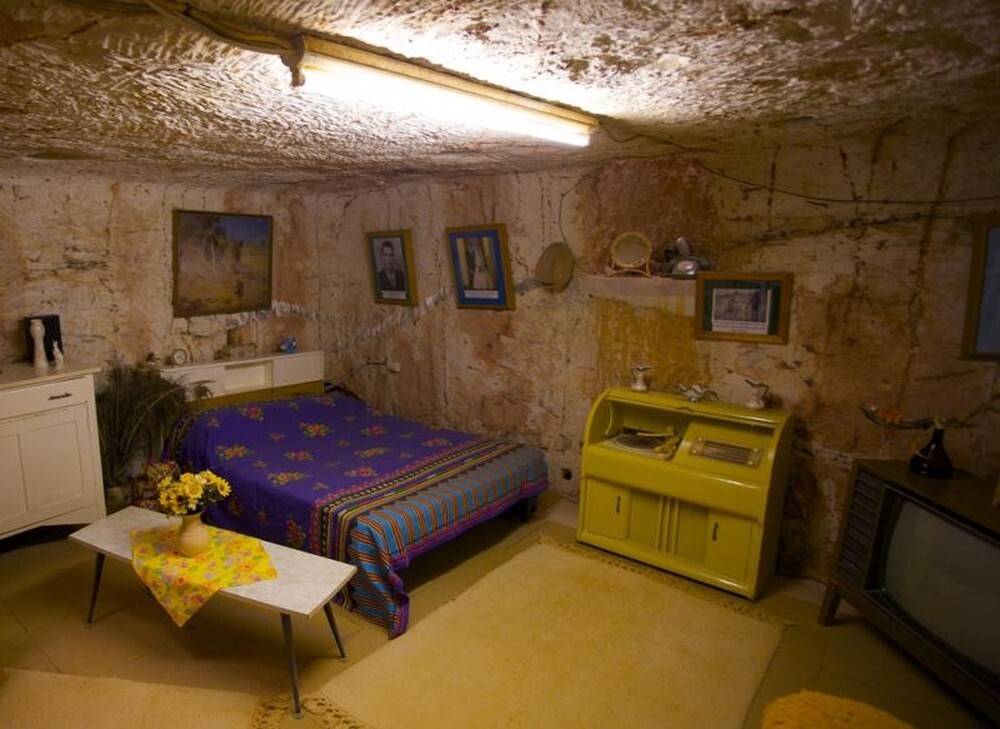
Fault lines run through many houses, which can be see in sandstone walls. And every house is supported by columns 1 meter thick. The houses also have concrete floors, which are often carpeted, as seen here in the living room of this house. 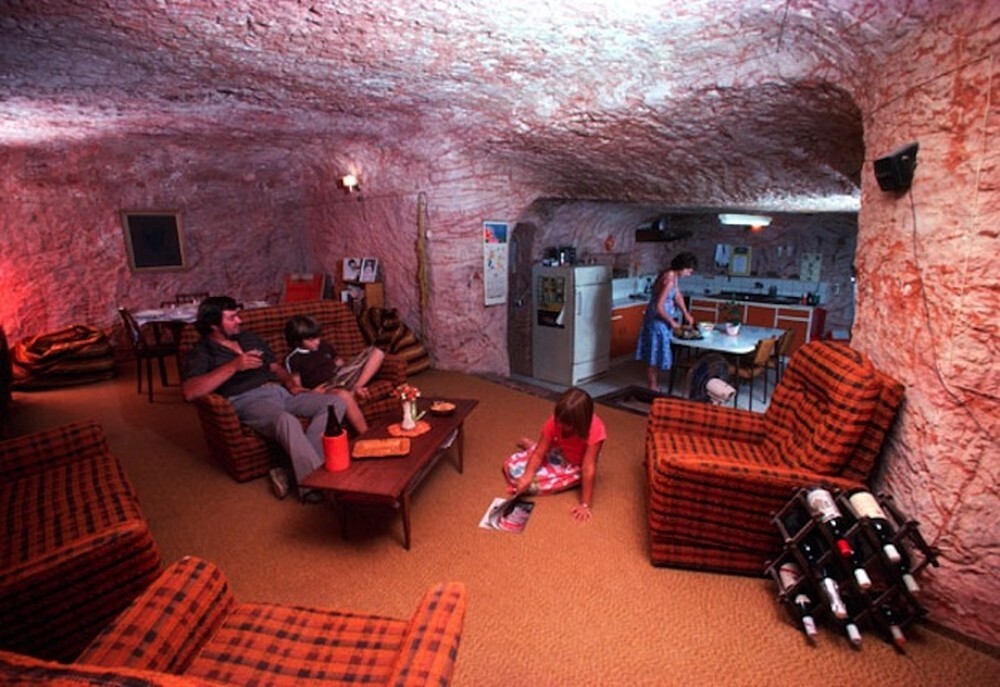
There are two underground churches in Coober Pedy... 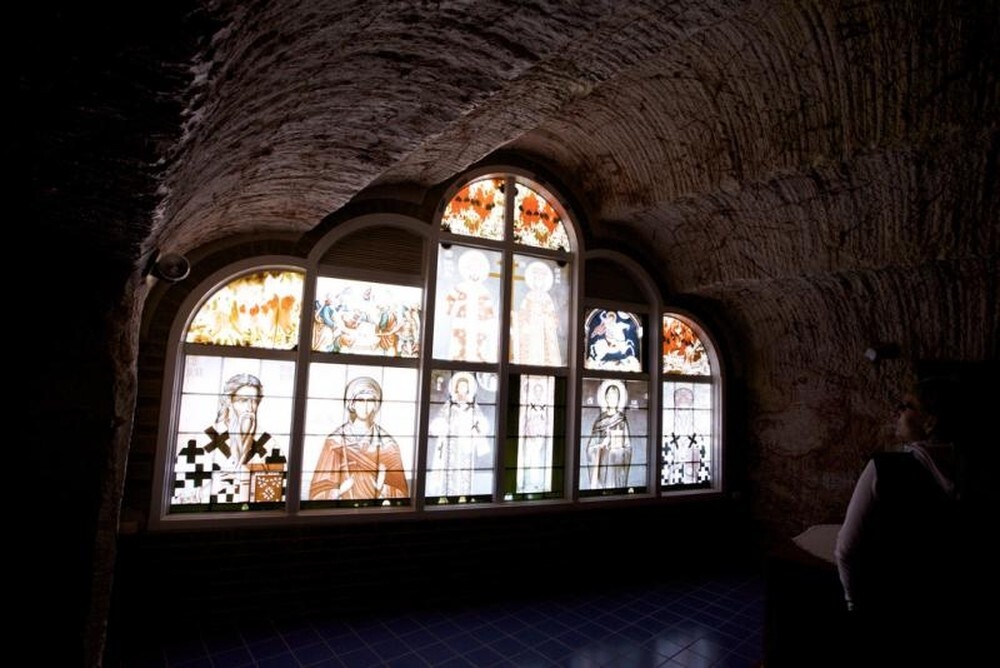
…an underground library… 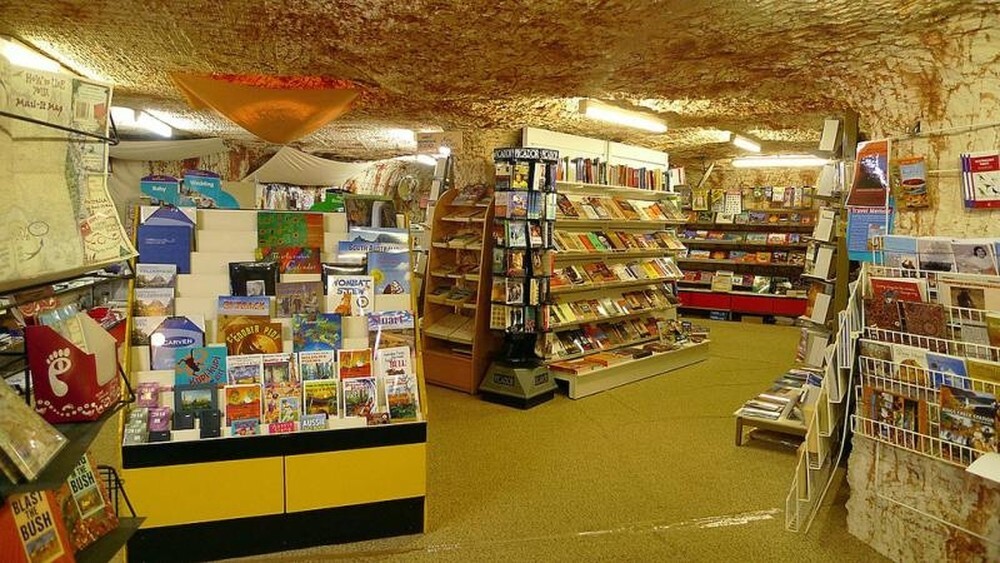
…and an underground bar called Desert Cave. 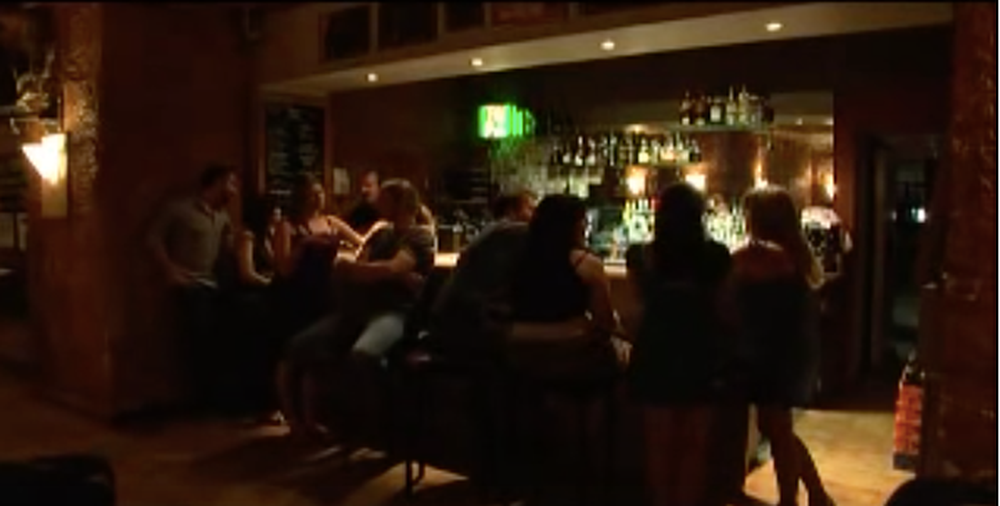
However, not everything is underground. Golf course located outside, although there are no herbs on it - players usually bring from home your own. 
When 15-year-old William Hutchison and his father were discovered here opal mine in 1915, they could hardly imagine that a whole city will appear in its place. 